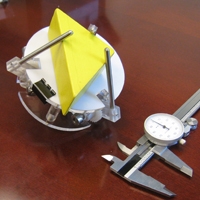
What type of hand should a robot have? Humans have very complex hands, with lots of fingers, muscles, and sensors. But is such complexity (and cost and weight) really necessary for generality? In fact, humans can achieve remarkable generality using simple prosthetic hooks, or tongs, or tweezers. While complex hands seem to surely offer greater generality, simple hands are often more practical. This raises the question: how do generality and simplicity trade off in the design of robot hands? This project explores the tension between simplicity in hand design and generality in hand function with the goal of developing a simple gripper, along with control and planning techniques, to enable general purpose manipulation.
This work was supported by ARL, NSF, DARPA, Junta de Comunidades de Castilla-La Mancha, Caja Madrid and Intel.
This work is sponsored in part by the Defense Advanced Research Projects Agency. This work does not necessarily reflect the position or the policy of the Government. No official endorsement should be inferred.
This work was sponsored in part by the Army Research Laboratory under Cooperative Agreement Number W911NF-10-2-0016. The views and conclusions of the project are those of the authors and should not be interpreted as representing the official policies, either expressed or implied, of the Army Research Laboratory.
This material is based upon work supported by the National Science Foundation under Grant No. 0916557. Any opinions, findings, and conclusions or recommendations expressed in this material are those of the author(s) and do not necessarily reflect the views of the National Science Foundation.
current head
current staff
current contact
past staff
- Nikhil Chavan-Dafle
- Anne Holladay
- Andres S Vazquez

